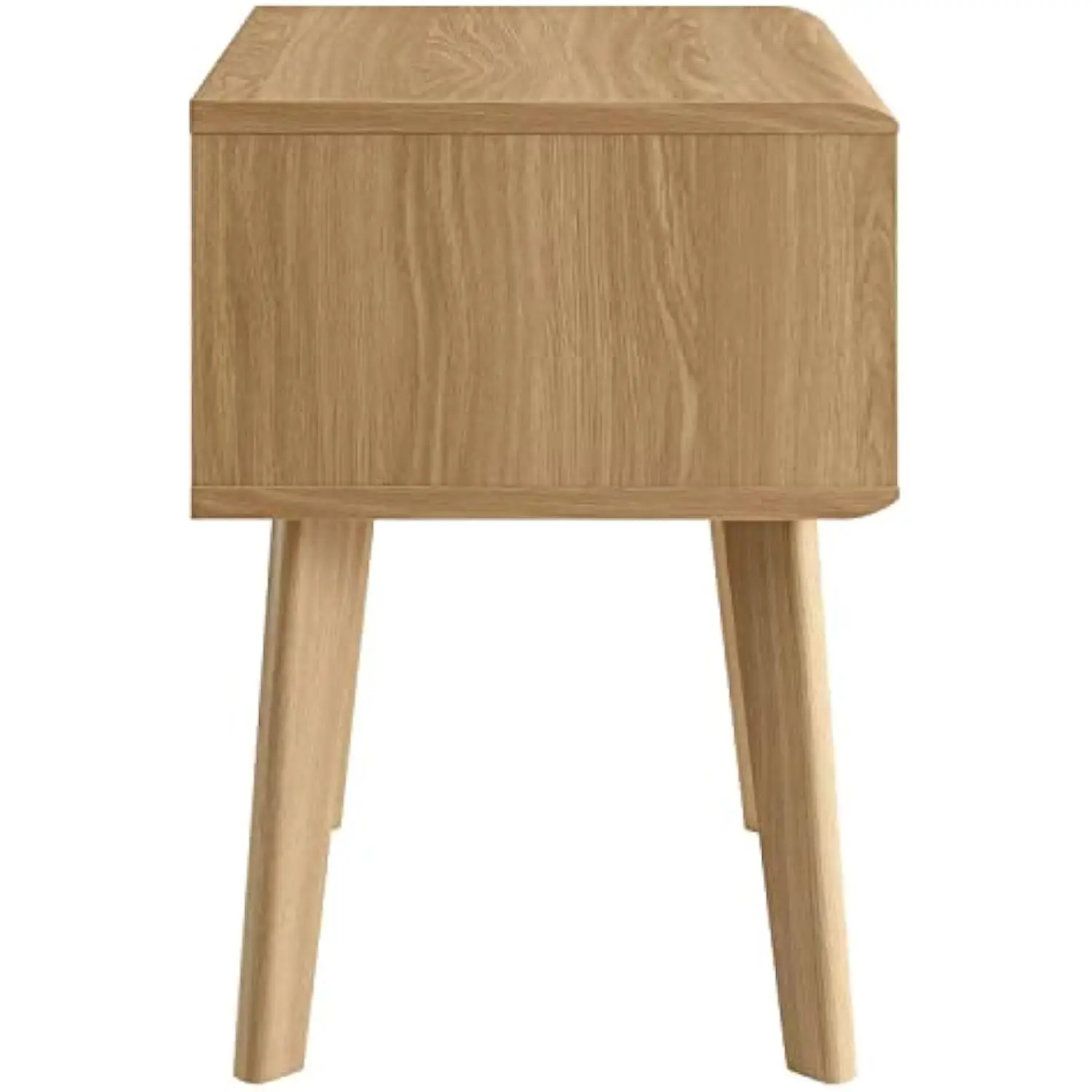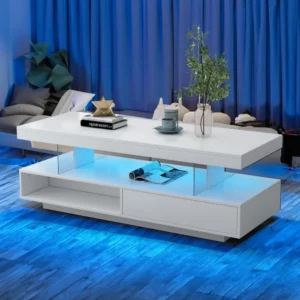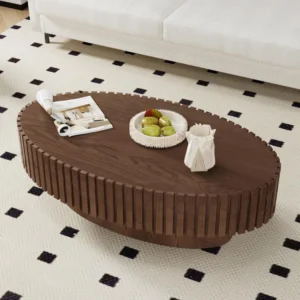The Unique Appeal of Teak Wood
Teak wood stands as one of nature’s most extraordinary materials, harvested primarily from the forests of Southeast Asia where the Tectona grandis tree thrives in tropical conditions. This remarkable hardwood has earned its reputation as the gold standard among furniture makers and designers worldwide, not merely for its striking appearance but for its exceptional practical qualities.
What truly sets teak apart from other hardwoods is its unusually high natural oil content. These oils serve as built-in preservatives, making teak naturally resistant to water, rot, fungi, and even termites. This natural resilience explains why teak has historically been the premier choice for shipbuilding and outdoor applications where exposure to the elements is constant.
The visual journey of teak adds another dimension to its appeal. When freshly cut, teak displays a warm honey-gold color that feels immediately inviting. Over time, if left untreated and exposed to the elements, it develops a distinguished silvery-gray patina that many designers and homeowners specifically seek out for its sophisticated appearance.
Teak Wood Facts
– Botanical name: Tectona grandis
– Origin: Southeast Asia (primarily Burma/Myanmar, Thailand, Indonesia)
– Density: Medium-high (approximately 41 lbs per cubic foot)
– Natural oils: High content of rubber and silica
– Lifespan: Can exceed 100 years with proper care
The investment value of teak cannot be overlooked. While its initial price point exceeds that of many other hardwoods, intelligent black mid-century coffee tables and other furniture crafted from quality teak will maintain both structural integrity and aesthetic appeal for generations, often increasing in value over time.
For those considering incorporating teak into their living spaces, exploring mid-century modern teak coffee tables reveals how this remarkable material has been transformed into functional art pieces that define spaces with timeless elegance.
Understanding Wood Grain: The Foundation of Character
Wood grain is far more than a surface detail—it’s the fundamental characteristic that gives each piece of teak its unique identity and appeal. Simply defined, grain refers to the pattern formed by wood fibers as they grow within the tree, creating distinctive lines, swirls, and textures that tell the story of the tree’s development.
The direction, density, and pattern of these fibers influence both the wood’s appearance and its structural properties:
- Grain direction: Determines how light plays across the surface and affects the wood’s strength along different axes
- Grain density: Tighter grain generally indicates slower growth and potentially greater stability
- Grain pattern: Reflects the tree’s growth history and the method used to cut the lumber
Several factors influence how teak grain develops during the tree’s life:
- Age of the tree (older trees typically develop more interesting grain patterns)
- Growing conditions including soil, climate, and available sunlight
- Presence of environmental stressors that create unique grain reactions
The cutting technique used to harvest lumber from the log dramatically affects the grain appearance. The definitive guide to teak grain direction explains how each cutting method reveals different aspects of the grain pattern—from the dramatic cathedral patterns of flat-sawn boards to the straight, parallel lines of quarter-sawn pieces.
Understanding grain terminology provides the foundation for appreciating teak’s versatility in design applications:
- Figure: Distinctive patterns like bird’s eye, curl, or burl that add visual interest
- Texture: The relative smoothness or roughness of the wood surface
- Character marks: Natural features like knots, mineral deposits, or color variations
This knowledge forms the essential groundwork for exploring how teak’s grain characteristics can be leveraged to create dramatically different design aesthetics.
Teak Grain Variations: Nature’s Artistic Expression
The remarkable diversity of grain patterns found in teak is part of what makes this wood so versatile across design styles. These variations aren’t random—they’re nature’s artistic expressions resulting from specific growing conditions and tree responses.
The most common grain patterns in teak include:
Straight grain: Characterized by parallel fiber alignment running the length of the board, straight grain teak provides a clean, consistent appearance prized in modern designs. This pattern typically results from steady, uninterrupted growth.
Wavy grain: When fibers develop gentle, undulating patterns, the result is wavy grain—creating dynamic visual interest without appearing busy or chaotic. This pattern often develops when the tree responds to varying environmental conditions.
Interlocked grain: In this fascinating pattern, wood fibers grow in alternating diagonal directions through successive growth layers. While visually striking, interlocked grain can present challenges during woodworking as it may tear during planing or cutting.
Figured patterns: Special formations like bird’s eye (small circular patterns), curly figure (rippled appearance), or burl (swirled, complex grain) represent nature’s most artistic expressions in wood. These premium patterns typically command higher prices for their uniqueness.
Professional furniture makers carefully select specific grain patterns for different applications. For example, straight-grained teak might be chosen for table legs where strength and predictable appearance are priorities, while more dramatic figured teak might be reserved for tabletops where its beauty becomes a focal point.
The grain pattern significantly impacts how teak responds to woodworking techniques. As the definitive guide to teak grain explains, wood with straight grain typically cuts cleanly and finishes smoothly, while interlocked grain provides exceptional strength but requires more careful handling during manufacturing.
Understanding these variations provides the essential foundation for appreciating how teak can be adapted to dramatically different design aesthetics—from rustic warmth to modern sophistication.
Rustic Teak: Embracing Natural Character
Rustic teak design celebrates the wood’s natural character by highlighting rather than hiding its organic variations. This approach creates spaces that feel grounded, authentic, and connected to nature.
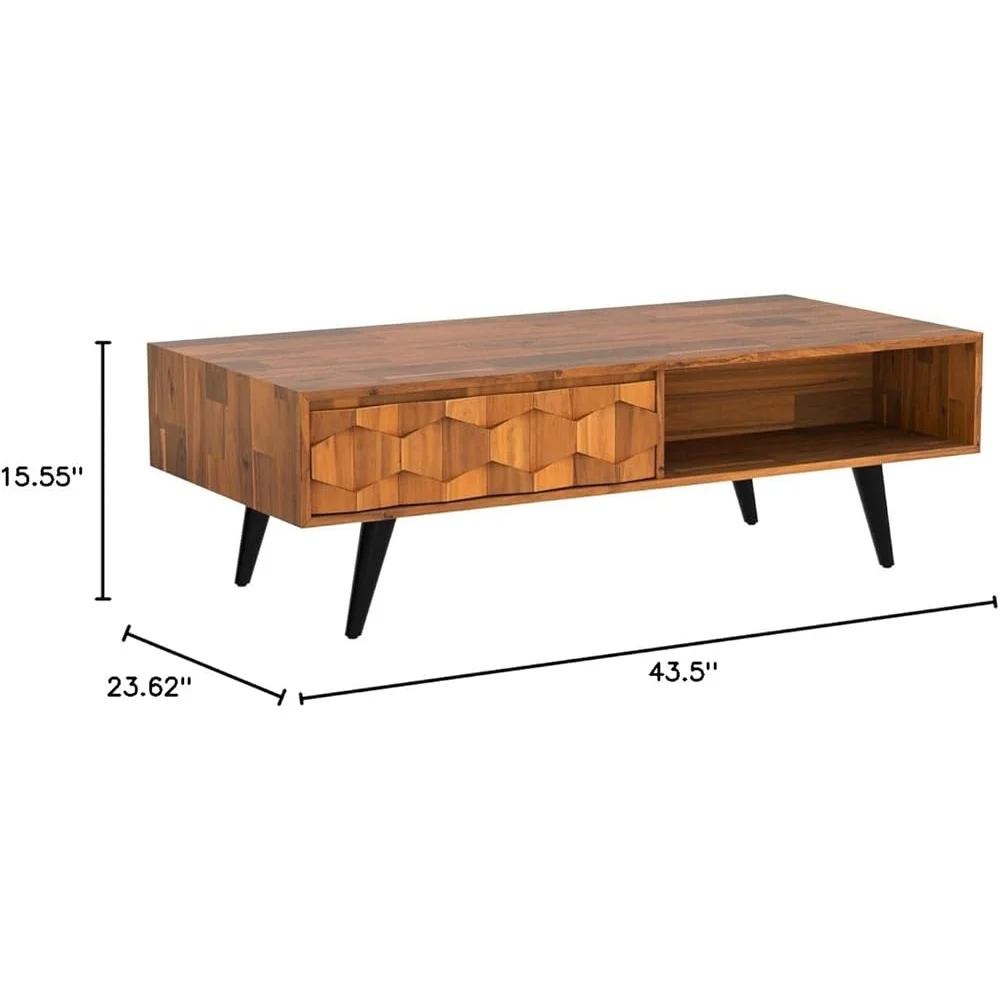
The grain characteristics that contribute most powerfully to rustic appeal include:
- Prominent grain variation: Dramatic differences between early and late growth create bold, visible grain lines that draw the eye
- Natural “imperfections”: Knots, burls, mineral streaks, and color variations tell the story of the tree’s growth journey
- Textural differences: Varying hardness between growth rings creates subtle topographical features that can be enhanced through finishing techniques
The cutting method significantly influences rustic character in teak furniture:
- Plain/flat sawn boards reveal cathedral patterns—dramatic arch-like grain structures that create movement and visual interest
- Live edge slabs preserve the natural contours of the tree, including bark inclusions and organic edge shapes
- Boards featuring sapwood incorporate color variation between the lighter outer wood and darker heartwood
Finishing techniques that enhance rustic teak focus on highlighting rather than concealing natural character:
- Hand-scraping or wire-brushing to accentuate the texture differences between hard and soft growth rings
- Natural oil finishes that penetrate the wood, enhancing color variation rather than creating uniform surface coating
- Techniques that deliberately accelerate or replicate natural aging processes, creating a sense of history
Styling black mid-century coffee table pieces alongside rustic teak creates appealing contrasts that balance organic warmth with structured elements. For maximum impact, explore mid-century modern solid wood coffee tables that showcase teak’s natural character while maintaining clean structural lines.
Rustic teak applications often feature slightly heavier proportions and more substantial visual weight, creating furniture that anchors a space while inviting touch and interaction.
Modern Teak: Sleek Lines and Subtle Sophistication
Modern teak design takes a dramatically different approach, emphasizing clean lines, visual restraint, and sophisticated simplicity. This aesthetic showcases teak’s inherent elegance through carefully controlled grain presentation.
The grain characteristics that contribute to modern teak’s appeal include:
- Straight, consistent grain patterns that create visual calm and ordered harmony
- Minimal natural variation with few knots or irregularities to interrupt the clean visual flow
- Uniform color distribution providing an elegant, cohesive appearance across furniture surfaces
- Fine, tight grain lines suggesting precision and refinement
Specific cutting methods are preferred for achieving modern teak aesthetics:
- Quarter-sawn teak yields boards with straight, parallel grain lines and distinctive ribbon figure running perpendicular to the grain direction
- Rift-sawn teak produces extremely stable boards with minimal grain variation—ideal for modern applications demanding visual consistency
- Carefully matched grain patterns ensure visual continuity across surfaces, creating a sense of intentional design
Finishing techniques for modern teak emphasize precision and refinement:
- Fine sanding to create ultra-smooth surfaces that highlight teak’s natural luster
- Clear finishes that preserve the wood’s natural color while providing protection
- Satin or matte sealers that create sophisticated surfaces without excessive shine
- Oil-rubbed finishes that enhance grain depth without creating artificial appearance
The principles that define black mid-century modern coffee table styles apply equally well to modern teak: clean lines, functional minimalism, and restrained elegance. Modern teak pieces often feature thinner proportions and lighter visual weight, creating furniture that appears to float rather than anchor a space.
Danish modern furniture exemplifies this approach, using premium straight-grained teak with minimal natural variation to create pieces that appear deceptively simple while showcasing extraordinary craftsmanship through perfect proportions and seamless joinery.
Rustic vs. Modern Teak: Side-by-Side Comparison
| Characteristic | Rustic Teak | Modern Teak |
|---|---|---|
| Grain Pattern | Varied, irregular, with natural character marks | Consistent, straight, minimal variation |
| Texture | Often enhanced to emphasize grain differences | Smooth, refined, minimal tactile variation |
| Color Variation | Celebrates natural color differences | Seeks uniformity across surfaces |
| Common Cuts | Plain/flat-sawn, live edge | Quarter-sawn, rift-sawn |
| Finishing Techniques | Wire-brushed, hand-scraped, natural oils | Fine-sanded, clear sealers, matte finishes |
| Complementary Materials | Wrought iron, natural stone, leather | Glass, chrome, painted surfaces |
| Visual Weight | Substantial, grounding | Light, floating |
This comparison highlights how the same wood species can create dramatically different aesthetic effects through selective harvesting, cutting, and finishing techniques. When making design decisions, consider which characteristics align with your overall design vision and existing elements in your space.
Design Applications: Teak Grain in Different Spaces
The versatility of teak grain allows it to enhance virtually any room in your home, with the grain pattern serving as a key determinant of how the wood integrates with your overall design scheme.
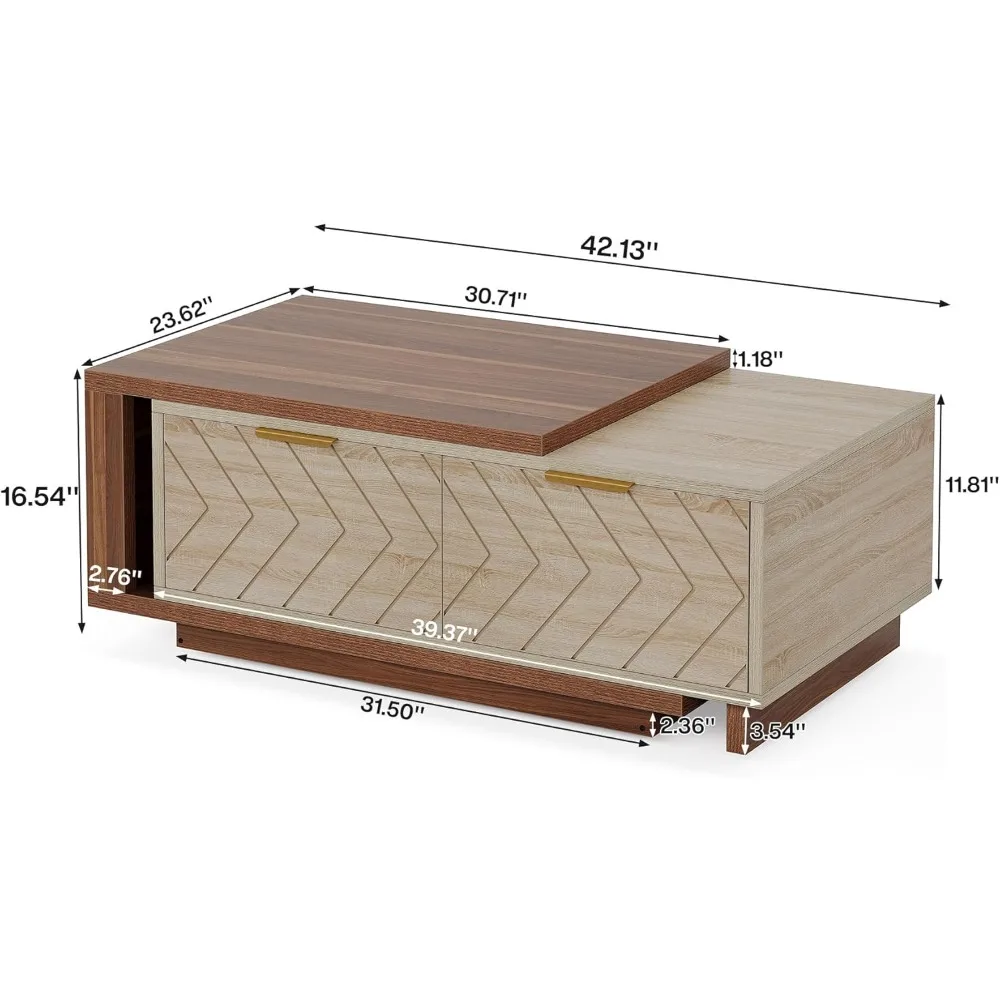
Living Spaces
Teak coffee tables serve as natural focal points in living rooms, with grain patterns influencing the room’s overall feel. Straight-grained modern teak creates clean, sophisticated centerpieces in contemporary spaces, while tables featuring prominent grain add organic warmth to more casual settings. The principles of teak table aesthetics for modern living emphasize how grain direction can visually lengthen or widen a room depending on its orientation.
Kitchen and Dining Areas
In kitchens and dining spaces, teak countertops and tables must balance beauty with practical durability. Straight-grained teak provides clean cutting surfaces with minimal disruption, while more dramatic grain patterns create statement dining tables that spark conversation. Consider rectangular coffee tables that showcase how different grain orientations can define the character of similarly shaped furniture.
Bathrooms
Teak’s natural water resistance makes it ideal for bathroom applications, where straight, tight grain patterns minimize water penetration and ensure longevity. Modern bathroom vanities often utilize quarter-sawn teak for its dimensional stability in humid environments, while rustic teak accessories add organic warmth to otherwise sterile spaces.
Outdoor Living
In outdoor applications, teak grain orientation significantly impacts both appearance and performance. Vertical grain orientation (where growth rings run perpendicular to the surface) creates decking that wears more evenly and resists cupping, while the silvery patina that develops outdoors often emphasizes grain patterns more dramatically than indoor applications.
Mid-Century Modern Solid Wood Coffee Tables, Mid-Century Modern Teak Coffee Tables
$879.95 Select options This product has multiple variants. The options may be chosen on the product pageMid-Century Modern Danish Coffee Tables, Mid-Century Modern Oval Coffee Tables, Mid-Century Modern Solid Wood Coffee Tables
$390.05 Select options This product has multiple variants. The options may be chosen on the product pageMid-Century Modern Large Coffee Tables, Mid-Century Modern Rectangular Coffee Tables
$603.26 Select options This product has multiple variants. The options may be chosen on the product pageMid-Century Modern Marble Top Coffee Tables, Mid-Century Modern Rectangular Coffee Tables, Mid-Century Modern White Coffee Tables
Price range: $163.28 through $189.22 Select options This product has multiple variants. The options may be chosen on the product pageMid-Century Modern Rectangular Coffee Tables, Mid-Century Modern White Coffee Tables
$605.68 Select options This product has multiple variants. The options may be chosen on the product pageMid-Century Modern Oval Coffee Tables, Mid-Century Modern Solid Wood Coffee Tables
$679.56 Select options This product has multiple variants. The options may be chosen on the product page
Successful design applications often balance different teak grain patterns within the same space. A room featuring primarily straight-grained modern teak furniture might incorporate a single rustic teak accent piece with more dramatic grain to create visual interest, while predominantly rustic spaces might include a clean-lined teak piece to provide visual rest.
Working with Teak Grain: Selection and Sourcing
Finding quality teak with grain patterns that match your design vision requires understanding what to look for and ask about when purchasing teak furniture or materials.
When evaluating teak quality, consider these grain-related factors:
- Growth ring density: Tighter growth rings generally indicate slower-grown teak with potentially superior stability
- Grain consistency: For modern applications, look for uniform grain direction without abrupt changes
- Color uniformity: Premium teak typically shows consistent golden-brown coloration throughout
- Character marks: For rustic applications, evaluate whether knots and variations appear naturally integrated rather than structurally compromising
When purchasing teak furniture, particularly pieces like Danish coffee tables known for their grain quality, ask these questions:
- Is this old-growth or plantation teak? (Old-growth typically features tighter grain patterns)
- How was the wood dried and for how long? (Properly dried teak has more stable grain)
- Where on the log did these boards come from? (Heartwood versus sapwood affects grain appearance)
- Does the piece use solid teak or veneer? (Solid teak allows for more authentic grain expression)
Ethical sourcing has become increasingly important when purchasing teak. Look for FSC certification or other responsible forestry credentials that ensure your teak comes from properly managed sources rather than contributing to deforestation.
Pricing for teak varies significantly based on grain quality and cutting method. Quarter-sawn teak with straight, tight grain typically commands premium prices due to both its aesthetic qualities and reduced yield during harvesting. Figured teak with unusual grain patterns may cost substantially more due to its rarity.
Maintaining Teak’s Natural Beauty: Grain-Specific Care
Proper maintenance ensures that teak grain remains beautiful for generations, with specific care approaches depending on the finish and intended aesthetic.
For Natural/Weathered Teak:
– Allow even weathering by ensuring consistent exposure to elements
– Clean periodically with mild soap and soft brush, scrubbing with grain direction
– Accept that grain will become more pronounced as softer wood fibers erode slightly
– Consider gentle pressure washing (low pressure only) annually to remove surface debris
For Oil-Finished Teak:
– Apply teak oil refresher every 3-6 months depending on use and exposure
– Clean surface thoroughly before oil application, removing any residue
– Work oil into grain using cloth moving in grain direction
– Wipe away excess oil to prevent sticky surface buildup
For Sealed/Lacquered Teak:
– Dust regularly with soft cloth moving in the direction of the grain
– Clean with barely damp cloth and mild cleaner formulated for sealed wood
– Avoid abrasive cleaners that might scratch protective finish
– Reapply sealer as recommended by manufacturer when water stops beading
Common teak issues and their grain-specific solutions:
- Raised grain: Light sanding with fine-grit paper (220+) following grain direction
- Water rings: For oiled surfaces, gentle rubbing with additional oil often removes marks
- Uneven color development: Apply thinned teak protector to equalize weathering
With proper care, teak’s distinctive grain patterns will continue to enhance your spaces for decades—potentially even improving in character and beauty over time.
Bridging Design Styles: When Rustic Meets Modern
The binary classification of teak as either “rustic” or “modern” fails to capture the nuanced potential of this versatile wood. Some of the most compelling design applications intentionally blend elements from both aesthetics.

Transitional design approaches that successfully bridge rustic and modern teak elements include:
- Structural minimalism with grain maximalism: Clean, modern forms that showcase dramatic grain patterns
- Selective character: Modern pieces that incorporate a single dramatic grain feature as a focal point
- Consistent inconsistency: Deliberately mismatched grain patterns within geometric frameworks
- Finish contrasts: Combining areas of smooth, refined finish with textured, grain-enhanced sections
Teak’s natural aging process creates inherent design flexibility. A piece that begins with modern crispness will develop character over time, naturally transitioning toward more rustic appeal as it develops patina. This evolution can be accelerated or restrained through maintenance choices.
When decorating black mid-century coffee tables, consider how teak accessories with varying grain patterns can create visual dialogue between different design elements. The contrast between structured, geometric furniture forms and organic teak grain creates tension that energizes living spaces.
Selective finishing transforms how we perceive grain—the same piece of teak can appear dramatically different depending on how its surface is treated. Wire-brushing emphasizes grain texture for rustic appeal, while fine sanding and clear finishing create refined surfaces for modern contexts.
This flexibility makes teak uniquely suited for homes that evolve over time or spaces that blend multiple design influences.
Conclusion: The Timeless Versatility of Teak Grain
Teak’s remarkable grain characteristics explain why this wood has maintained its status as a premium material across centuries and design movements. Few natural materials offer such versatility—capable of expressing both rustic charm and modern elegance with equal authenticity.
The investment in quality teak rewards owners with both aesthetic pleasure and practical durability. While other trendy materials come and go, teak’s appeal remains constant, with pieces often gaining character and value over decades of use.
By understanding how grain patterns influence teak’s appearance and performance, you’re empowered to make intentional choices that align with your personal design vision. Whether you prefer the organic warmth of rustic teak or the refined precision of modern applications—or perhaps a thoughtful blend of both—teak’s natural beauty offers endless possibilities for creating spaces that feel both timeless and personally meaningful.

